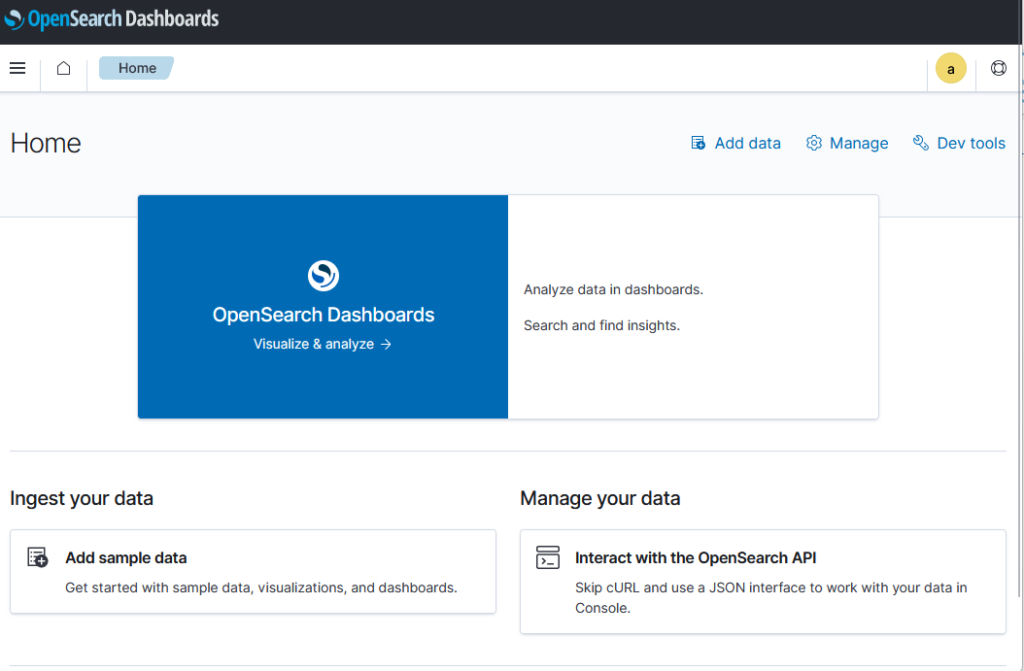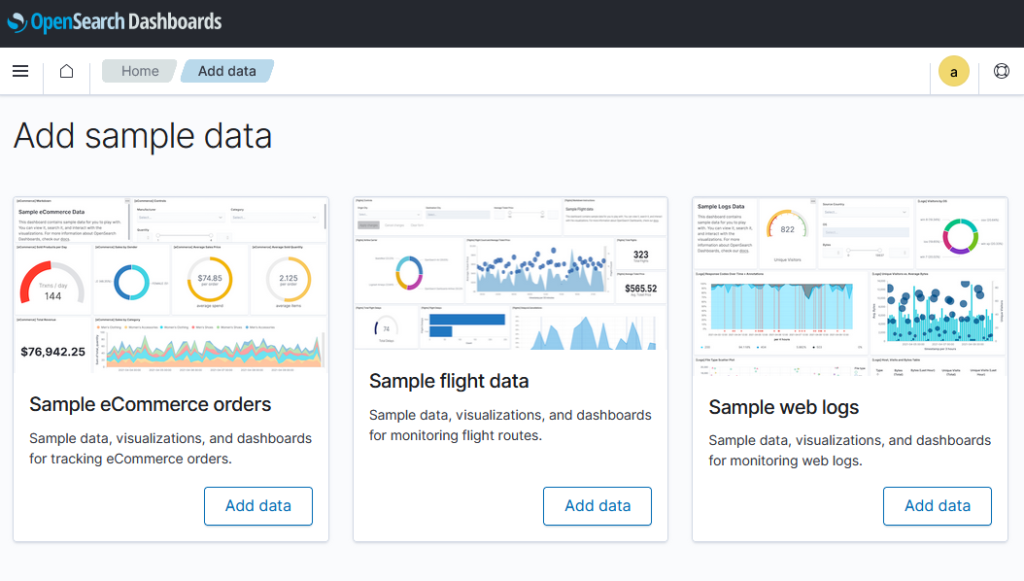OpenSearch is Amazon’s open-source search engine and analytics suite. Individuals, businesses, and organizations can use the service to search for a wide range of information and use visualization tools to better understand user behavior and search trends. This article will discuss how you can use OpenSearch in Fedora Linux.
Prerequisites
- A Linux Distribution (Fedora OS)
- Amazon Web Services (AWS) Account
- OpenSearch and OpenSearch Dashboards
What can OpenSearch do?
OpenSearch provides several features and tools. These are:
- Applications that monitor and debug your cluster.
- Manage security and event information.
- Enable seamless, personalized search results.
- A web-based user interface for searching and browsing search results.
- The ability to search for specific terms or phrases within a document or webpage.
- The ability to filter search results by date, relevance, or other criteria.
- The ability to create and save searches for later use.
- The ability to customize the appearance and functionality of the search results page.
- Advanced analytics and reporting tools to help users understand and analyze search traffic and user behavior.
The following sections will guide you through the basics of creating a domain, uploading test data, and visualizing your information with OpenSearch Dashboards.
What is an OpenSearch Service domain?
An OpenSearch Service domain is a service provided by AWS that allows you to create, manage, and configure your cluster(s) using either the AWS console or the AWS command-line interface (CLI). This tutorial, will use the AWS console to create and configure your domain.
Getting started
To begin the domain setup, launch your preferred browser and log in to your AWS console. Navigate to the Amazon OpenSearch Service page, then click Create domain.

Choose your domain name and leave the Enable custom endpoint box unmarked.

OpenSearch is a fork of Elasticsearch version 7.10. You can choose any version up to Elasticsearch version 7.10 in addition to OpenSearch versions.
Choose Development and testing for your deployment type, the most recent OpenSearch version, and enable compatibility.

Leave Auto-Tune enabled and Add maintenance window unmarked.

The Data nodes options allows you to customize your nodes based on the needs of your applications:
- Availability Zones (AZ)
- Amazon Web Services (AWS) Availability Zones are physically separate and isolated data center locations within an AWS region. Each Availability Zone is designed to be fault-tolerant, with redundant power, networking, and cooling infrastructure.
- Instance type:
- Refers to the type of virtual server you’d like to use for your application.
- Number of nodes:
- The number of nodes you’d like to allocate to each of your AZs.
Since we’re running in a small development setting, set your AZ to 2, your Instance type to t3.small.search, and Number of nodes to 2. Don’t change the default settings for your Storage type, EBS volume type, and EBS storage size per node.

Ignore these options for now, but read on for more information:
- Warm and cold data storage:
- For use cases that require a cost effective solution for storing large amounts of non-mutable data.
- Dedicated master nodes
- Allows you to choose how many master nodes you’d like to use for your domain.
- Snapshot configuration:
- Set to hourly by default.

VPC access is recommended for production environments. You’ll also need to create a master user login to access OpenSearch Dashboards, OpenSearch’s data visualization tool. We’ll discuss how to use OpenSearch dashboards after you configure your domain.
Select Public access and Create master user, and set up your login.

Leave Prepare SAML authentication and Enable Amazon Cognito authentication option boxes unchecked and select Only use fine-grained access control for your access policy.


Select Use AWS owned key, ignore the optional configurations, click Create to create your domain, then wait for your domain to activate.
Using OpenSearch Dashboards
OpenSearch Dashboards is a tool that allows you to create and customize interactive dashboards to visualize the data your site receives from user interaction. These dashboards are visual representations of data from various sources such as logs, metrics, and security events, which can be customized to meet your specific needs, including:
- Dragging and dropping different types of visualizations, such as graphs, maps, and tables, onto a dashboard.
- Filtering and manipulating data to highlight specific trends or patterns.
- Sharing dashboards with other users or embedding them in other applications.
- Collaborating with other users in real-time on the same dashboard.
Navigate to domains and select it from the list.

Click OpenSearch Dashboards URL to access your OpenSearch Dashboard.

You’ll be presented with one of the following screens after you’ve logged into your dashboard:

Visualization options
Click Add sample data to add sample data provided by AWS.

You may select any of the three options. The Sample web logs option will be used, here, to view examples of types of visualization options you can use to analyze your data.






Click Create new to add more visualization options:

Analyze your own data to analyze
You can upload one or more of your documents by entering commands through a CLI.
Add a single document
curl -XPUT -u 'master-user:[master-user-password]' 'domain-endpoint/[domain name]/_doc/1' -d '{"field1": "string1", "field2": ["string3","string4"]}' -H 'Content-Type: application/json'
Add multiple documents
Create a JSON file with your documents and run a command to add multiple documents:
JSON file format:
{ "index" : { "_index": "indexname", "_id" : "2" } }
{"field1": "string1", "field2": ["string2", "string3", "string4"], "field3": 1234, "field4": ["String, 5", "String, 6"]}
{ "index" : { "_index": "indexname", "_id" : "3" } }
{"field5": "string7", "field6": ["string8", "string9", "string10"], "field7": 5678, "field8": ["String, 11", "String, 12"]}
{ "index" : { "_index": "indexname", "_id" : "4" } }
{"field9": "string13", "field10": ["string14", "string15", "string16"], "field11": 1011, "field12": ["String, 17", "String, 18"]}
JSON file naming restrictions:
- All letters must be lowercase.
- Index names cannot begin with _ or – .
- Index names can’t contain spaces, commas, : , ” , * , + , / , \ , | , ? , # , > , or < .
Command to run:
curl -XPOST -u 'master-user:[master-user-password]' 'domain-endpoint/_bulk' --data-binary @bulk_[domain name].json -H 'Content-Type: application/json'
You can now create and configure your own domain and use OpenSearch Dashboards to visualize the data your domain receives.







KarlisK
Also worth noting that you can run a local instance of Opensearch ON your Fedora machine via Podman!
You can grab the official container image off Docher Hub: https://hub.docker.com/r/opensearchproject/opensearch
Or build it all from source if you fancy: https://github.com/opensearch-project/opensearch-build
Anonymous Coward
I’m disappointed in this article. It’s just an advertisement for AWS’s proprietary OpenSearch service. I would have expected an article about running an OpenSearch instance on Fedora Server. The above article doesn’t even mention Fedora once.
Anonymous Coward
Agreed, this has litrrally nothing to do with Fedora and does not belong on this blog!
Gregory Bartholomew
Admittedly, when I approved this article proposal, I thought the article would cover how to install the application locally. It seems the author took the article in a direction different from what I expected. Sorry that I did not catch it before publication. FWIW, it looks like this software can operate locally without relying on third-party servers:
(https://opensearch.org/docs/latest/about/)
Jeffrey Choi
I did not realize this article was already published. I’ll take this article down and take it into the direction the comments suggested.
Gregory Bartholomew
Unfortunately, once they go out, they are pretty much out for good. We can’t really take them back from the various feed readers et al. You could write another version of the same topic if you want and then maybe we could add a redirect from this one to the new and improved version.
Another Anonymous Coward
I am also very disappointed to see this. I think the post should be updated to remove the focus on an Amazon service. This community should not promote FAANG companies for free.
Gregory Bartholomew
Amazon actually has (and continues to) donate to the Fedora Project (see https://communityblog.fedoraproject.org/special-thanks-to-nest-platinum-sponsor-amazon-aws/). So the “for free” part of your argument doesn’t apply and I’m not going to attempt rework this post to remove all references to Amazon. I do agree, however, that as a general policy, we don’t want Fedora Magazine to be seen as just a bunch of ads for companies. That this one went through the way it did was accidental and we’ll try to make sure it doesn’t happen again.
When the original author completes a revised version that shows how to install and use the software locally, I will set a redirect from this post’s URL to the new article.
That anonymous coward
Either the article is free advertising because the decisions to post it, etc, were made independently of the existing sponsorship OR it was posted because of that sponsorship, in which case your argument that it’s not free advertising is correct but we’ve got the bigger problem that it’s an ad not marked as an ad.
Might be a good idea in the future to make sure that any post which mentions a sponsor of Fedora explicitly mentions that relationship in a disclaimer.
RH
I agree with the others expressing disappointment with this post. The only thing it seems to require Fedora for is a browser, which most other OSs have. Only the first comment suggesting the possibility of using a container running on your Fedora system, would seem to make the article about Fedora, which the article isn’t. I’ve set up multiple Elastic clusters in AWS so I have seen these screenshots before for AWS administration via a web browser. If the article is admitted to not be free as AWS has paid for it with it’s donations, then shouldn’t it be labeled as an advertisement? Even if it wasn’t paid for, shouldn’t it be label as an ad for 3rd party product?
An article showing how to run opensource elastic or opensearch via boxes, virtualbox VMs, containers, or other virtualization seems like it would be more appropriate to display Fedora’s capability and functionality. Maybe better yet, an article showing how to setup a lab or small production cluster on Fedora server and using Fedora workstation terminal cli and browser for administration and content development (in Kibana). Just an idea.
michaek
never hurd such a thing . always thought of it . its way cool and i will take furthger look into it.
Jeffrey Choi
Then I’ll write a second article that focuses on using the CLI.
Angel
excellent post